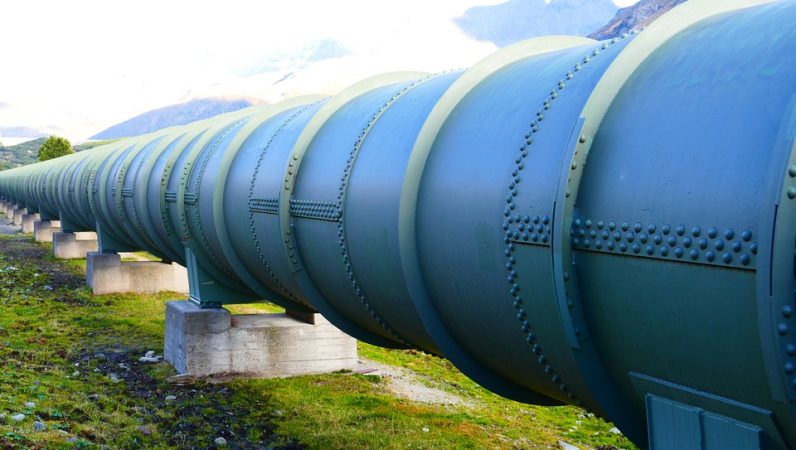Below are some critical safety precautions for working on pipelines.
1. Gas Detection System Application and Routine Safety Training
To raise awareness of on-site safety and strengthen employee learning, employers should schedule regular safety training. During the training, all employees, supervisors, and managers should participate. Reinforcement learning is an effective way to create a cohesive mindset in all people. Training should be consistent with national standards and industry best practices from recognized associations. Safety tools are used to improve the safety of pipelines in the natural gas industry.
2. Following a Safety Culture
Safety is paramount in piping installations to avoid unsafe conditions that could harm personnel. Safety must come before work, not vice versa. Managers and supervisors have a responsibility to instill this sense in employees by setting an example, offering rewards, and taking action when necessary.
All site personnel must obtain a STOP WORK permit to permit them to cancel a process they determine to be unsafe.
Not only site personnel but the nearby residents are also affected by Gas Leaks. Therefore Gas Monitoring systems are used to identify gas Leaks at early stages.
3. Ensuring Best Pipeline Excavations
Proper pipeline excavation procedures should be followed with caution to avoid unsafe site conditions. The excavator used must be serviced when due and the operator is fully trained. Explosions or environmental pollution can occur when excavators damage underground pipes. Therefore, all buried utilities must be identified and marked before the start of operation. Proper branching and ramping techniques are essential during excavation. OSHA requires that employees working in trenches 5 feet deep or more feet deep in some states) use the trench protection system. In case the digging is too deep gas pipeline leak detection plan is used for detecting gas leaks.
4. Follow Proper Training for Heavy-Duty Machinery
All workers working with heavy machinery should be properly trained and informed on the correct job procedure at the respective job site. Also, place Operation and maintenance (OMM) instructions for the machines on which they work are made available to employees at all times. Workers appropriately trained for one type of machine are not necessarily skilled in the use of the other. Avoid switching roles between workers to avoid unsafety due to improper operation.
5. Onsite Tool Inspection
Routine gas monitoring system and usage of inspection equipment. When Gas flows with high pressure with time the pipeline may crack. Even Weather Conditions and pipe aging may lead to corrosion and holes that appear due to rusting. Routine check-ups, Repair, Replacements, and On-Time Alerts may reduce or completely mitigate the risk of any incident. Various inspection instruments used in the pipeline industry include a gas detector these are sophisticated devices that inspect for gas leaks.
6. Maintain Correct Pressure Testing Procedures
An important safety precaution for working on pipelines is not to operate pipelines beyond their Maximum Operating Pressure for extended periods. Carrying out testing above a pipeline’s pressure rating can compromise its integrity. Always follow written test procedures specified by manufacturers to stay within safe limits. The most critical issue in the gas industry is gas leaks. A gas detection system is used in Gas Industry to make sure gas leaks can be mitigated and proper crack welding and fixing can be initiated at the right time.
7. Use Proper Handling Techniques
When working with heavy equipment such as pipes, always use correct handling procedures. Operators should follow the manufacturer’s recommendations for handling equipment and avoid overloading. If necessary, use mechanical aids, for example, when lifting heavy and hanging objects such as pipes and fittings to avoid back injuries. Before starting any activity, prepare an Occupational Hazard Analysis (JHA). This document will inform all employees of the risks involved in performing a particular job to help them stay safe. OSHA has several safety standards for manual and properly assisted lifting procedures. Gas Pipeline is risky sometimes workers dig so deep that gas pipeline cracks and slowly the gas starts leaking. Now, at this point when human sense fails gas detectors are used.
Final Words
An important safety precaution when working on gas piping is not to operate the piping above the maximum working pressure for long periods of time. Testing the pipeline pressure level can affect the integrity of the pipeline. Always follow the written test procedures specified by the manufacturer to stay within safe limits. Gas Detection System is used in industries to make sure pre alarms can be accessed which in turn saves lives.

3 thoughts on “8 Steps to Follow In Pipeline Safety and Gas Detection System Application:”